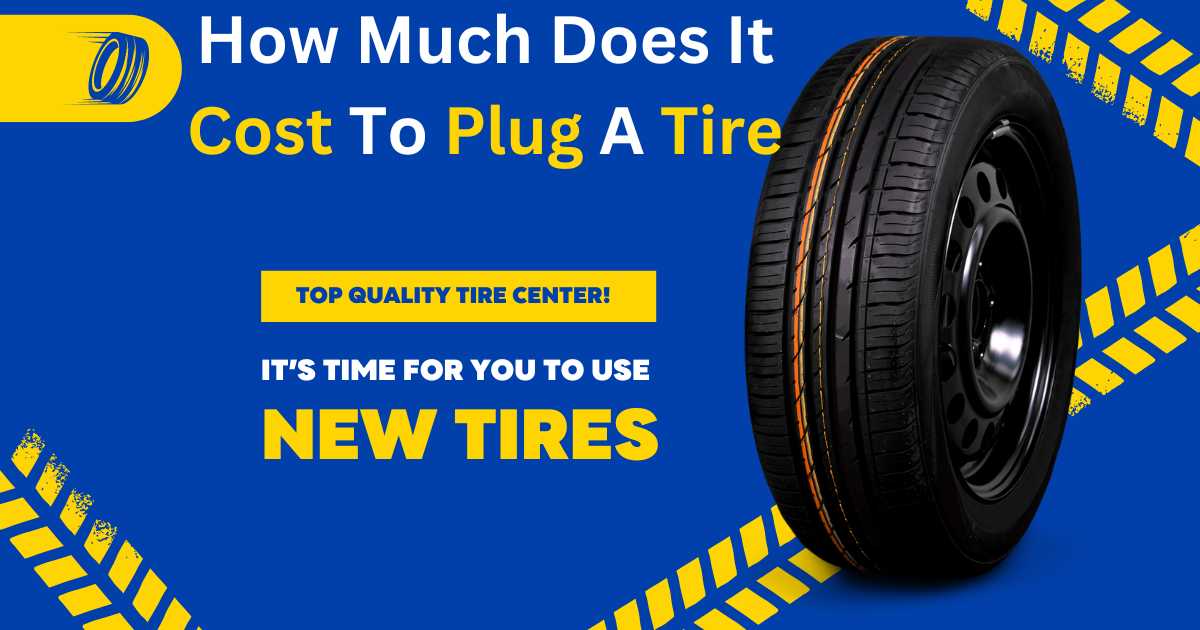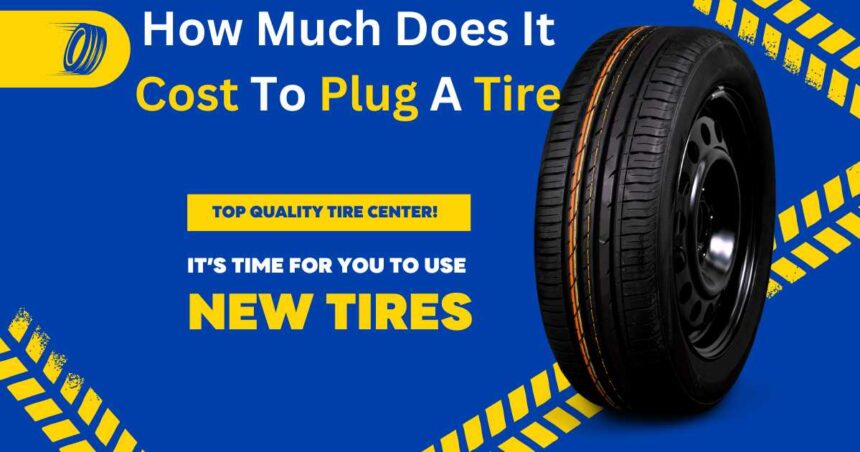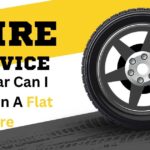How Much Does It Cost To Plug A Tire: Getting a flat tire when you’re driving can really mess up your plans. It’s annoying and can make you worry about how much it will cost to fix. But instead of shelling out a lot of money for a new tire, you can save some cash by just plugging the hole.

How Much Does It Cost To Plug A Tire
Understanding Your Flat Tire Fixes: Plug Vs. Patches
Plugs and patches are two ways to fix flat tires, but they work best for different problems:
Tire Plugs: Fast and Cheap
Think of a plug as a quick and affordable fix for small holes in the tire tread, usually caused by nails or screws. To plug the hole, you insert a special plug coated with a sealant material. This seals the hole, stopping the air from leaking out and letting you get back on the road quickly.
Tire Patches: A More Permanent Fix
Patches are better for bigger holes or ones on the tire’s side. Fixing a tire with a patch takes more time because you have to remove part of the tire’s inner liner. Then you apply a patch with adhesive backing and put the liner back. Even though it takes longer, patches are more reliable and last longer than plugs.
How Many Miles Does A Prius Last
The Price Tag On Plugs: Sealing The Deal On Savings
Getting a tire plugged costs a lot less than buying a new tire. Here’s why:
Plug Cost: The plug you need to fix the tire usually costs between $5 and $10.
Labor Cost: The price to have someone plug your tire can vary based on where you go and the shop’s rates. Usually, it’s between $15 and $30.
Plugging In The Numbers: Expect To Pay Between $20 and $50
Usually, fixing a tire by plugging it costs between $20 and $50. That’s way cheaper than buying a whole new tire, which can cost anywhere from $50 to over $200. The price depends on things like the tire’s size, type, and how well it perform, like if it’s an all-season tire or a high-performance one.
To Plug Or Not To Plug: That’s The Question
Using a plug to fix a tire is a good way to save money, but it might not work for every situation. Here are some things to think about when you’re deciding whether to use a plug or a patch:
How Bad Is The Hole: Plugs are best for small holes in the tread of the tire, usually less than 1/4 inch wide. If the hole is bigger or on the side of the tire, a patch is a better choice for a strong and lasting fix.
Tire Health: The condition of your tire matters too. If your tire is old or has been patches before, a plug might not be enough to keep it safe. In those cases, getting a new tire is probably the smarter choice for the long term.
Beyond The Cost: Safety Considerations
Always prioritize safety when it comes to your tires. If you’re not sure how bad the hole is, how healthy your tire is, or if a plug will work, it’s best to talk to a tire expert. They can check out your tire, see how bad the damage is, and suggest the best way to fix it so you can drive safely without spending too much money.
Prolonging Your Plugged Tire’s Lifespan
After you plug your tire, you can do a few things to make sure the fix lasts a long time.
Keep The Right Tire Pressure: Check your tire pressure often, especially the one you plugged, to make sure it’s at the level the manufacturer suggests. If it’s too low, it can strain the plug and make it less effective.
Check The Plug Sometimes: Every now and then, look at where you plugged the tire to see if it’s wearing out or leaking. If you see any problems, talk to a tire expert right away.
The Final Verdict: Plugs Can Be Your Tire’s Saving Grace
Knowing the contrast between plugs and patches, their costs, and what affects your repair options helps you choose wisely when you have a flat tire. Often, using a plug is a safe and affordable way to get back on the road fast. But remember, safety comes first. If you’re unsure, a tire expert can guide you through fixing your flat tire safely.






